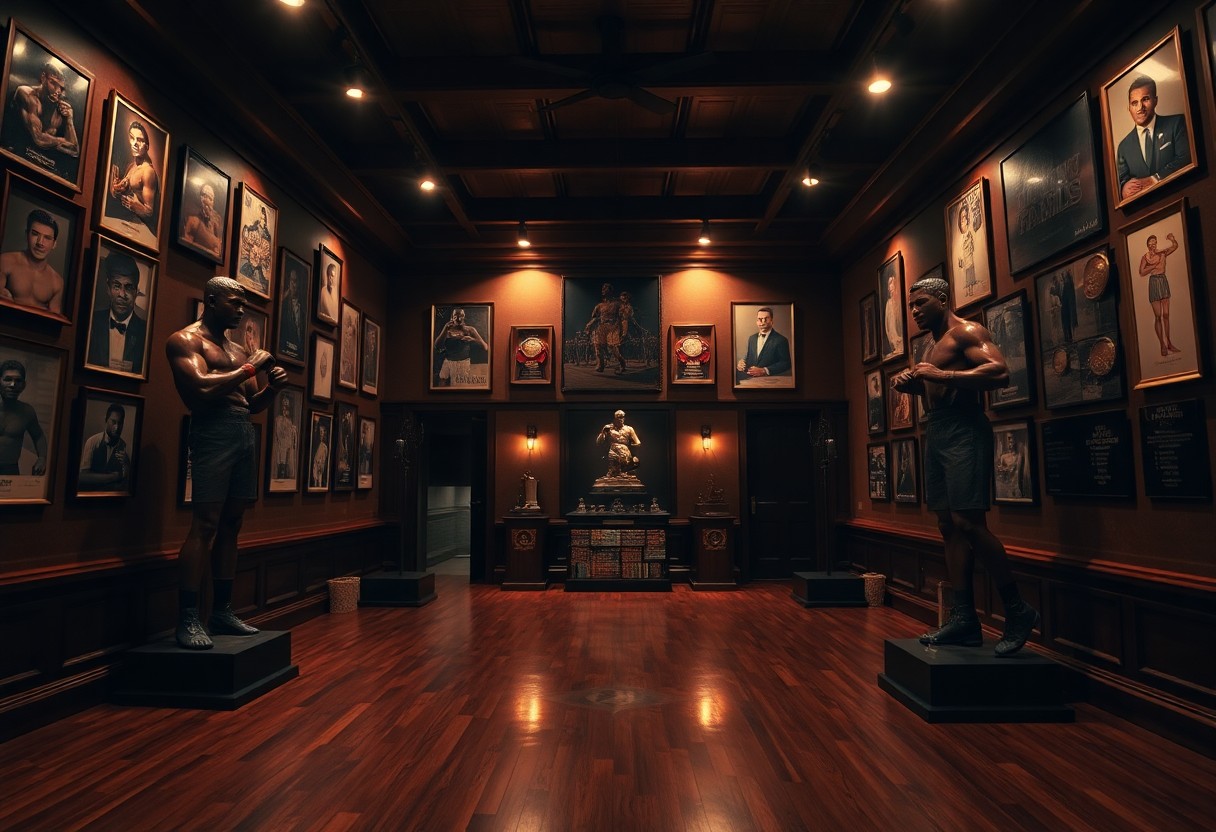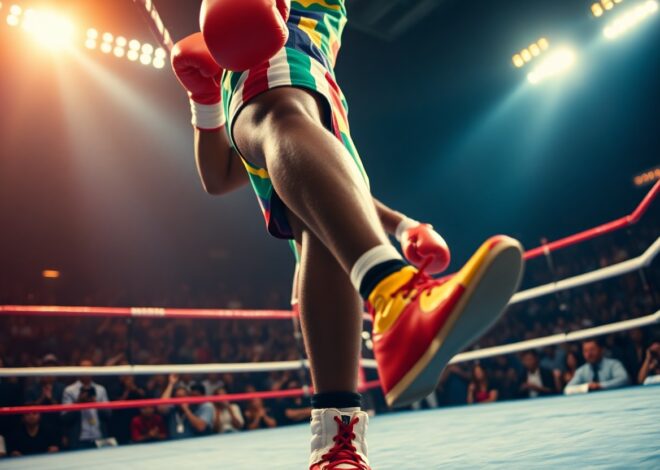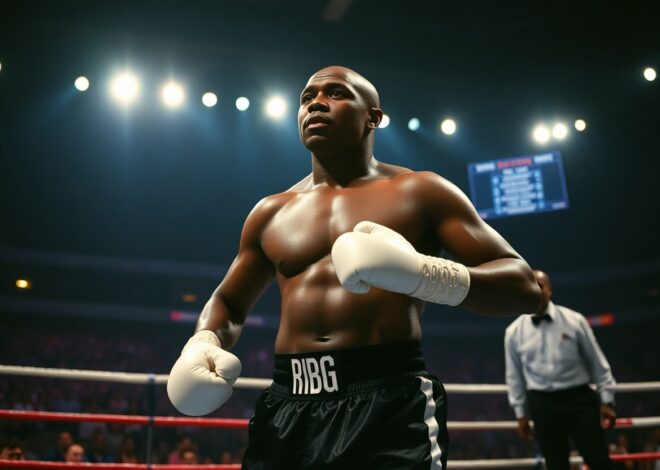
The Hall Of Fame: Celebrating The Enduring Legacy Of Boxing Legends
Just as the ring serves as a battleground for champions, the Hall of Fame stands as a monument to the extraordinary achievements of boxing legends. This guide examines into the impact and significance of the Hall of Fame, showcasing the fighters who shaped the sport’s history. From their remarkable career milestones to their lasting influence on future generations, we explore how these icons not only defined their eras but also transformed the boxing landscape with their strength, courage, and indomitable spirit.
Types of Boxing Legends
The landscape of boxing is rich with diverse legends who have left an indelible mark on the sport. Among these icons, we can categorize them into several types, each representing unique attributes and achievements that have etched their names into history.
- Heavyweight Champions
- Featherweight Icons
- Welterweight Warriors
- Lightweight Greats
- Women’s Boxing Pioneers
Any boxing aficionado can appreciate the varied styles, stories, and impacts these legends have had on the sport, paving the way for future generations.
Heavyweight Champions
Heavyweight champions have historically represented the pinnacle of boxing prowess, showcasing incredible power and endurance in the ring. Icons like Mohamed Ali and Mike Tyson not only captivated audiences with their skills but also influenced social and cultural movements, leaving a legacy that extends beyond boxing. Their fights often defined eras, making them some of the most celebrated personalities in history.
Featherweight Icons
The featherweight division boasts numerous icons, known for their speed, agility, and tactical finesse. Legends like Willie Pep and Sandy Saddler not only showcased remarkable technical abilities but also engaged in historic rivalries that thrilled fans. These fighters proved that lighter categories could produce explosive matchups and unforgettable moments in boxing history.
Featherweight icons have consistently challenged the perception of weight divisions, demonstrating that skill and heart can outweigh size. In a realm often dominated by heavier fighters, these athletes have set high standards in their craft, showcasing dazzling combinations and strategic cunning. Their rivalry bouts have not only captivated audiences but also crafted a narrative that emphasized courage over sheer force, influencing generations of boxers who followed in their footsteps.
Factors Contributing to an Enduring Legacy
The legacy of boxing legends is shaped by numerous factors that not only highlight their in-ring achievements but also solidify their status in the hearts of fans. Key elements include their technical abilities, resilience, and the impact they had on the sport’s landscape. Additionally, their dedication to the craft and the way they carried themselves outside the ring plays a significant role. Skill and character are vital, along with influence and philanthropy. Assume that all these aspects work in harmony to create an everlasting impression on future generations.
Skill and Technique
Exceptional skill and technique are paramount in defining a boxer’s greatness. The finest fighters demonstrate not only power but also agility, tactical acumen, and adaptability in their approach. Historical figures like Muhammad Ali showcased remarkable footwork and speed, while others like Joe Frazier displayed overwhelming strength and relentless pressure. Such attributes consistently contribute to the perception of their enduring legacy.
Sportsmanship and Character
To inspire loyalty and respect, sportsmanship and character are indispensable traits among boxing legends. Icons like Sugar Ray Robinson and Oscar De La Hoya exemplified these qualities, as they not only embraced their victories but also acknowledged their opponents’ strengths. Their graciousness in the face of both triumph and defeat has left a lasting impression on fans and aspiring athletes alike.
Moreover, sportsmanship extends beyond mere behavior in the ring; it involves the commitment to uplift others within the sport. Legends like Muhammad Ali utilized their platform to advocate for change, demonstrating integrity and strength of character. Through such actions, they not only enhanced their legacies but also became role models, leaving an indelible mark on the sport and society. A boxer’s ability to inspire through virtue often cements their legacy for decades, if not centuries, to come.
Tips for Understanding Boxing’s History
Grasping the rich tapestry of boxing’s history enhances appreciation for the sport.
- Examine significant eras, noting how cultural shifts impacted the sport.
- Study rules that have evolved, reflecting changing societal norms regarding violence and competition.
- Dive into the lives of champions and their unique stories, which embody the spirit of boxing.
After immersing yourself in these elements, you will develop a deeper connection to boxing’s legacy.
Researching Key Figures
Identifying pioneers like Jack Johnson, Muhammad Ali, and Mike Tyson provides insight into why boxing became a global phenomenon. Their stories exemplify resilience, societal impact, and the evolution of the sport, revealing the diverse backgrounds and motivations that fueled their success.
Watching Notable Fights
Viewing iconic matches allows fans to grasp the dramatic intensity and significance of the sport’s history. Fights such as Ali vs. Frazier in 1971 or Tyson vs. Holyfield in 1997 showcase not only the physical artistry but also the emotional stakes and cultural relevance of each bout.
Notable fights illustrate key moments where legends clashed in the ring, offering lessons in strategy, tenacity, and sportsmanship. For instance, the “Fight of the Century” between Ali and Frazier marked one of the most anticipated events in sports history, while Tyson’s infamous “ ear-biting” incident against Holyfield opened debates on sportsmanship and mental health in high-pressure environments. Through these historic clashes, one comprehends not just the technical skills employed but also the broader narratives that resonate through generations.
Pros and Cons of Hall of Fame Induction
| Pros | Cons |
|---|---|
| Increases fighter’s legacy and historical significance. | Selection process can be perceived as biased. |
| Provides recognition for hard work and dedication. | May exclude equally deserving fighters. |
| Enhances marketability for post-career opportunities. | Public scrutiny over inductee choices can be divisive. |
| Encourages youth involvement in the sport. | Debates over criteria can diminish its value. |
| Creates a platform for legends to share their stories. | Induction may oversimplify complex career narratives. |
Benefits of Recognition
Induction into the Hall of Fame serves as a powerful recognition of a boxer’s achievements, often leading to increased visibility and respect within the community. This honor not only immortalizes their contributions to the sport but also inspires future generations. Fighters like Muhammad Ali and Joe Louis have set benchmarks of excellence, motivating young athletes to strive for greatness and redemption in the ring. The spotlight can also open doors to lucrative endorsements and speaking engagements, reinforcing their legacy as icons.
Controversies Surrounding Selection
The selection process for the Hall of Fame has been fraught with controversies, often sparking heated debates among fans and experts alike. Factors such as historical bias, personal opinions of voters, and the complexity of boxing metrics contribute to the perceived unfairness. Boxers like Diego Corrales, who had undeniable skills and heart, faced rejection while others with less compelling records were inducted. Such discrepancies raise questions about the consistency and criteria used to evaluate candidates, leaving room for contention every induction season.
Critics have voiced concerns that the Hall of Fame selection process can appear influenced by popularity rather than merit, leading to exclusions that overshadow deserving candidates. For instance, boxing fans frequently debate whether spectacular talent or titles should weigh more in the decision. Additionally, the presence of controversial figures in the sport raises ethical questions surrounding their inclusion. The ongoing discussions highlight the need for transparency and objective criteria to ensure the Hall of Fame remains a true celebration of boxing greatness without unfair biases influencing selection outcomes.
Step-by-Step Guide to Nomination Process
| Step | Description |
|---|---|
| 1 | Review eligibility criteria for nominees. |
| 2 | Complete the nomination form with detailed accomplishments. |
| 3 | Submit the nomination before the deadline. |
| 4 | Participate in the voting process. |
Eligibility Criteria
A candidate must have a minimum of ten years of professional boxing experience, demonstrating exceptional achievements such as championship titles and impact on the sport. Additionally, they should possess a positive reputation within the boxing community, evidenced by sportsmanship, contributions beyond the ring, and lasting influence on future generations. Nominees from diverse backgrounds and weight classes are encouraged to celebrate the sport’s history.
Voting Procedures
The voting process involves a select committee comprising boxing historians, retired boxers, and industry professionals who assess each nomination based on performance metrics, historical significance, and overall contributions to the sport. Voters evaluate the candidates via a weighted scoring system, ensuring a fair representation of each nominee’s legacy.
This systematic approach to voting enhances transparency and inclusivity within the Hall of Fame. Each member of the voting committee receives ballots detailing nominees’ achievements and contributions, ensuring they make informed decisions. The results are compiled, with only those achieving a predetermined threshold of votes receiving induction, solidifying their legacy in boxing history.
Celebrating Their Impact on Modern Boxing
The indelible mark left by boxing legends drives the sport’s evolution, inspiring new generations of fighters to push the boundaries of what’s possible. Their unique styles, strategies, and unwavering determination serve as a blueprint for contemporary athletes, guiding their training regimes and fight preparations. As modern champions study the footage of past greats, they often find motivation in the risk-taking, sportsmanship, and showmanship exhibited by those who came before, further solidifying the legendary fighters’ influence on boxing’s present and future.
Influence on Current Fighters
Many current fighters openly acknowledge the impact of past legends on their careers. Champions like Canelo Álvarez and Terence Crawford often cite greats such as Muhammad Ali and Sugar Ray Leonard as pivotal influences, incorporating their techniques and mental approaches into their own fighting styles. These fighters demonstrate how the lessons learned from history shape today’s strategies, emphasizing the importance of legacy in achieving success within the ring.
Legacy Events and Tributes
Legacy events and tributes serve to honor the monumental achievements of boxing’s finest, ensuring their contributions remain a central part of the sport’s narrative. From commemorative ceremonies and charity fights to special broadcasts featuring their iconic bouts, these events foster a sense of community that connects fans, fighters, and historians alike. Such tributes not only celebrate individual accomplishments but also reinforce the bond between generations, preserving the rich history that defines boxing. Noteworthy anniversaries, such as the annual “Ali Festival,” draw attention to these legends while inspiring conversations about the sport’s future.
Conclusion
Now, the Hall of Fame stands as a testament to the remarkable achievements and indelible impact of boxing legends. It honors the fighters who have shaped the sport through their extraordinary skills, resilience, and contributions. By celebrating their legacies, the Hall of Fame not only preserves the history of boxing but also inspires future generations of athletes to pursue excellence within the ring. The enduring stories of these champions continue to resonate, highlighting the profound influence of boxing on culture and society.
FAQ
Q: What is “The Hall Of Fame – Celebrating The Enduring Legacy Of Boxing Legends”?
A: “The Hall Of Fame – Celebrating The Enduring Legacy Of Boxing Legends” is an exhibition that honors the achievements and contributions of legendary boxers throughout history. It showcases their impact on the sport and includes memorabilia, interactive displays, and tributes to their career highlights.
Q: Who are some of the boxing legends featured in the Hall of Fame?
A: The Hall of Fame features an array of renowned boxers, including Muhammad Ali, Joe Frazier, Sugar Ray Leonard, and Mike Tyson, along with many others who have made significant contributions to the sport.
Q: How can visitors engage with the Hall of Fame exhibition?
A: Visitors can engage with the exhibition through guided tours, interactive exhibits, viewing rare artifacts, attending special events, and participating in discussions about the history and significance of boxing legends.



